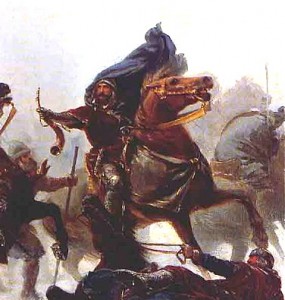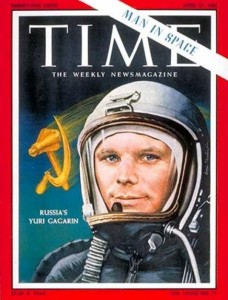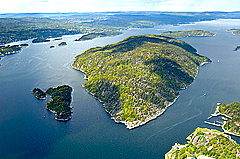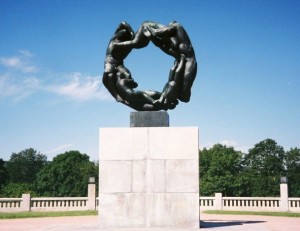Note: Roy Jacobsen was WINNER of the Norwegian Booksellers Prize in 2009, the same year in which he was also SHORTLISTED for the IMPAC Dublin Award.
“Linda was not of this world, one day I would come to understand this – she was a Martian come down to earth to speak in tongues to heathens, to speak French to Norwegians, and Russian to Americans. She was destiny, beauty and a catastrophe…God must have had a purpose with her, a secret plan—but what?”
 Setting his novel in Oslo in 1961, author Roy Jacobsen tells the story of Finn, a small boy of about nine, and his divorced, and later widowed, mother as they cope with life’s hard realities. Extremely close, they struggle to make ends meet, his mother always making it a point to be at home when he returns from school, and working only part-time at a shoe store, for his sake. Finn’s “hard realities” become much harder when circumstances force his mother to rent out his room to a boarder. One interview with a potential boarder is so intense that she closes the door on Finn and conducts it in private – the woman is not a potential boarder but her ex-husband’s second wife, the mother of Finn’s half-sister Linda. She does not share any of this information with Finn, who does not know about the sister, and she is preoccupied and tense for weeks afterward. The long-term aftereffects of this mysterious meeting leave Finn perpetually “stealing furtive glances at her, my nervous, frightened of the dark but on the whole stable and everlasting mother, my bedrock on earth and my fortress in heaven, now wearing an unrecognizable face.”
Setting his novel in Oslo in 1961, author Roy Jacobsen tells the story of Finn, a small boy of about nine, and his divorced, and later widowed, mother as they cope with life’s hard realities. Extremely close, they struggle to make ends meet, his mother always making it a point to be at home when he returns from school, and working only part-time at a shoe store, for his sake. Finn’s “hard realities” become much harder when circumstances force his mother to rent out his room to a boarder. One interview with a potential boarder is so intense that she closes the door on Finn and conducts it in private – the woman is not a potential boarder but her ex-husband’s second wife, the mother of Finn’s half-sister Linda. She does not share any of this information with Finn, who does not know about the sister, and she is preoccupied and tense for weeks afterward. The long-term aftereffects of this mysterious meeting leave Finn perpetually “stealing furtive glances at her, my nervous, frightened of the dark but on the whole stable and everlasting mother, my bedrock on earth and my fortress in heaven, now wearing an unrecognizable face.”

In the ensuing weeks, Finn continues to wonder “how long a small boy has to [wait] for his mother to come to her senses and assure him that nothing has changed, irrespective of whether cosmonaut Yuri Gagarin has blown us all sky high.” When Finn faces an emotional crisis because of the unexpected distance that has developed with his mother, she finally admits that not only does he have a half-sister named Linda but that the little girl will be moving in with them immediately. Their boarder, Kristian, who has moved into the bedroom formerly belonging to Finn, has told Finn about King Sverre, a very short warrior-king from the twelfth century who achieved monumental historical stature for his deeds, but that will not be enough to solve Finn’s problems of identity as the household gets ready for the little girl’s arrival.
Telling the story which develops with Linda’s arrival from Finn’s point of view, Jacobsen recreates the tension-filled childhood of a boy who is unsure of who he is – and, more importantly, who his mother really is. Linda, he discovers, is virtually mute, living “quietly…wrapped up in her own eternity,” and Finn’s mother is desperate to help her, apparently believing that Finn is able to cope on his own. Linda’s inability to communicate with others limits Finn’s ability to consider her a real sister and severely affects the relationships he has, not only with his mother but with others, and when Linda starts school, he recognizes that he will have to protect her from other, crueler children.
– and, more importantly, who his mother really is. Linda, he discovers, is virtually mute, living “quietly…wrapped up in her own eternity,” and Finn’s mother is desperate to help her, apparently believing that Finn is able to cope on his own. Linda’s inability to communicate with others limits Finn’s ability to consider her a real sister and severely affects the relationships he has, not only with his mother but with others, and when Linda starts school, he recognizes that he will have to protect her from other, crueler children.
Kristian, the boarder, occasionally reaches out to him, sharing books and a longed-for television set, but Finn still feels like an outsider, and when Kristian lends the family his tent on Haoya Island for a summer vacation, the scene is set for both pleasures and crises.
Finn’s point of view is straightforward – he wants answers, now – and the author represents this in an almost terse style, but Jacobsen faces a conundrum which affects the reader’s ability to identify with Finn and makes the mother a problematic character. Because Finn is a young child, he is unable to understand or draw valid conclusions about the mysterious events happening around him, and since his mother deliberately denies both him and the reader important information, Finn’s point of view is too limited to lead to real warmth or understanding of the family. Finn often acts completely out of control, and the reader, not being privy to important background details, often feels assaulted by him, just as Finn’s mother must have felt.
affects the reader’s ability to identify with Finn and makes the mother a problematic character. Because Finn is a young child, he is unable to understand or draw valid conclusions about the mysterious events happening around him, and since his mother deliberately denies both him and the reader important information, Finn’s point of view is too limited to lead to real warmth or understanding of the family. Finn often acts completely out of control, and the reader, not being privy to important background details, often feels assaulted by him, just as Finn’s mother must have felt.
Throughout, the author emphasizes the extremes to which some people, including children like Finn, Linda, Finn’s friend Frank I, and Dundas, a school bully, will go to belong to a group – but some of the parents at the “estate” where they live, and Finn’s extended family, at Christmas, are not exempt from extreme behavior and insensitivity, either. Many times their feelings and behavior are the result of misunderstanding or lack of information, which, if shared might have helped avoid the problems. The final chapters  are a shock – a kind of tour de force – and though some readers might guess at some of the revelations, the author studiously avoids giving any clues to these events from the outward and obvious behavior of the characters before the crisis. When the author, almost as an Afterword, then advances the action to what has happened in the ten years from 1961 until after Finn finishes high school, he allows Finn to explain some of the choices that have been made but, wisely, does not try to justify them, proving ultimately how much Finn has grown, on his own, in recognizing the degree of power a person has or does not have to control his own life.
are a shock – a kind of tour de force – and though some readers might guess at some of the revelations, the author studiously avoids giving any clues to these events from the outward and obvious behavior of the characters before the crisis. When the author, almost as an Afterword, then advances the action to what has happened in the ten years from 1961 until after Finn finishes high school, he allows Finn to explain some of the choices that have been made but, wisely, does not try to justify them, proving ultimately how much Finn has grown, on his own, in recognizing the degree of power a person has or does not have to control his own life.
The novel does leave one question unanswered. Though I have not seen any interviews in which the author discusses whether this book is in any way autobiographical, I could not stop wondering about this. On one odd occasion, a character refers to Finn’s mother, very casually, as “fru Jacobsen” – and while that is not an unusual Norwegian name, one cannot help wondering why the author chose to use his own surname unless he is deliberately suggesting an autobiographical component. Certainly the use of “Jacobsen” might explain the author’s ability to describe so intimately the alienation which Finn feels, and it makes the author’s avoidance of judgment about the mother and other characters more understandable.
unusual Norwegian name, one cannot help wondering why the author chose to use his own surname unless he is deliberately suggesting an autobiographical component. Certainly the use of “Jacobsen” might explain the author’s ability to describe so intimately the alienation which Finn feels, and it makes the author’s avoidance of judgment about the mother and other characters more understandable.
Photos, in order: The author’s photo appears on http://snl.no.
King Sverre, a 12th century king of Norway, was the subject of a discussion betweenKristian, the boarder, and Finn about bravery and history. This is a detail from a mid- to late-19th century painting by Peter Nicolai Arbo which appears in http://en.wikipedia.org
Yuri Gagarin, whose space walk in 1961 is the biggest milestone in history for the characters in this novel, and especially Finn, is seen here: http://www.eliteoftheworld.com
The photo of Haoya Island, where Finn begins his own coming of age, may be found here: http://travelingluck.com
In one of the book’s ironies, Finn sees a photo of his father standing in front of Vigeland’s “Wheel of Life” sculpture at Frogner Park. http://www.freewebs.com
